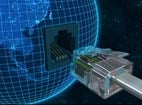The Internet of Things (IoT) is real and is getting more real every day. And contrary to some lingering beliefs, it will not be optional. Organizations that do not take advantage of the data collection and analytics capabilities that are hitting the channel will find themselves at a distinct competitive disadvantage in the new digital economy.
According to Gartner, there are already close to 5 billion connected devices in the world today, a 30 percent increase from just one year ago. By the end of the decade, there will be an estimated 25 billion “things,” each generating a unique data stream that should be captured, combined with other streams, analyzed and otherwise leveraged for one or more broader business goals. The research group says that while consumer applications will drive the number of connected devices, the enterprise will account for most of the revenue. Virtually anything can become connected, even individual body parts, generating information not just about themselves but their surrounding environments as well.
To deal with this influx of data, the data center must be upgraded in five key areas, says Ciena Corp.’s Brian Lavallée: the data center interconnect (DCI), compute infrastructure, storage, availability and security. The overarching goals of IoT infrastructure should include the movement of data both within and without the data center as well as the ability to process and analyze large volumes quickly and efficiently. At the same time, IoT infrastructure needs to be flexible and dynamic enough to suit the data and application environments it will encounter. Enterprises that fail to address these crucial aspects of the basic underpinnings of the IoT will see steady interruption in the deployment process, particularly across the wide-scale framework that is needed for optimal IoT performance.
The enterprise should also be aware that the IoT is not merely data center operations on steroids but represents an entirely new level of data functionality, which is leading to a fair amount of apprehension among data executives, says Datamation’s Bruce Byfield. A recent survey by research firm Vanson Bourne shows that more than 70 percent of top IT executives feel that the IoT will improve the ability to meet key business objectives and gain a competitive advantage, but an equally large percentage says they are not yet getting meaningful insights from sensor-driven data and are unsure exactly what kinds of applications are appropriate for IoT workloads. As well, organizations are struggling to devise the appropriate tools for such fundamental tasks as collection, storage and management of data.
Where there is a need, however, there is usually someone willing to devise a solution, and there is no shortage of vendors working overtime to create the optimal IoT platform. IBM is leveraging its OpenPower consortium to produce a high-speed analytics system capable of machine-learning, intelligent operation and cognitive compute applications. The platform is built around IBM’s Watson supercomputer, which has recently been outfitted with Nvidia K80 GPUs, and incorporates such diverse systems as Xilinx’ NFV solution, Mellanox’ Switch IB-2 platform and advanced development resources from Oregon State, the University of Texas and other research organizations. The ultimate goal of the program is to foster open integration between processing and data acceleration platforms to enable faster analysis of ever-expanding data loads.
The amount of new ground that needs to be broken in order to bring the IoT from the test bed to full production environments is substantial, more so than virtually every other technology initiative we’ve seen so far, save for the very first mainframes of the 1940s and 50s. The goal, however, is more than worthy: data manipulation at an unprecedented level generating insight and knowledge that could literally transform the world.
The economic impact will be huge, but the social and cultural impact will be profound.
Arthur Cole writes about infrastructure for IT Business Edge. Cole has been covering the high-tech media and computing industries for more than 20 years, having served as editor of TV Technology, Video Technology News, Internet News and Multimedia Weekly. His contributions have appeared in Communications Today and Enterprise Networking Planet and as web content for numerous high-tech clients like TwinStrata and Carpathia. Follow Art on Twitter @acole602.




